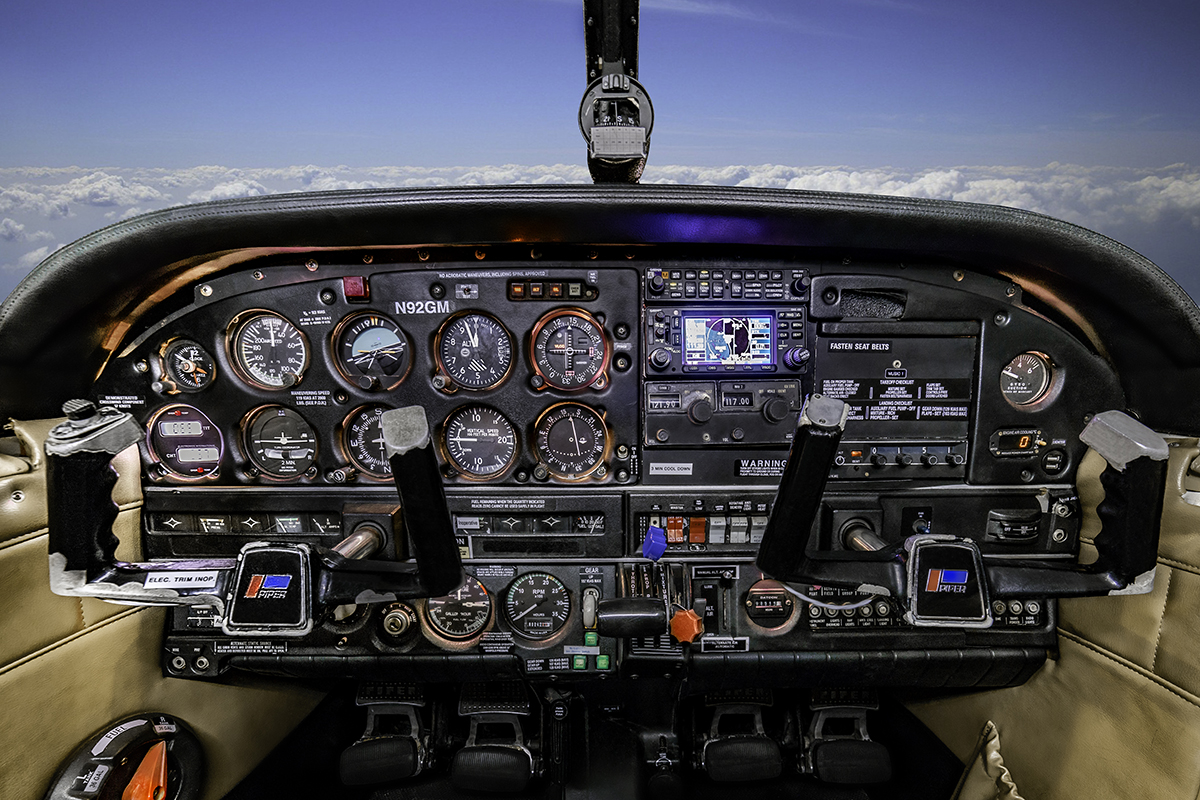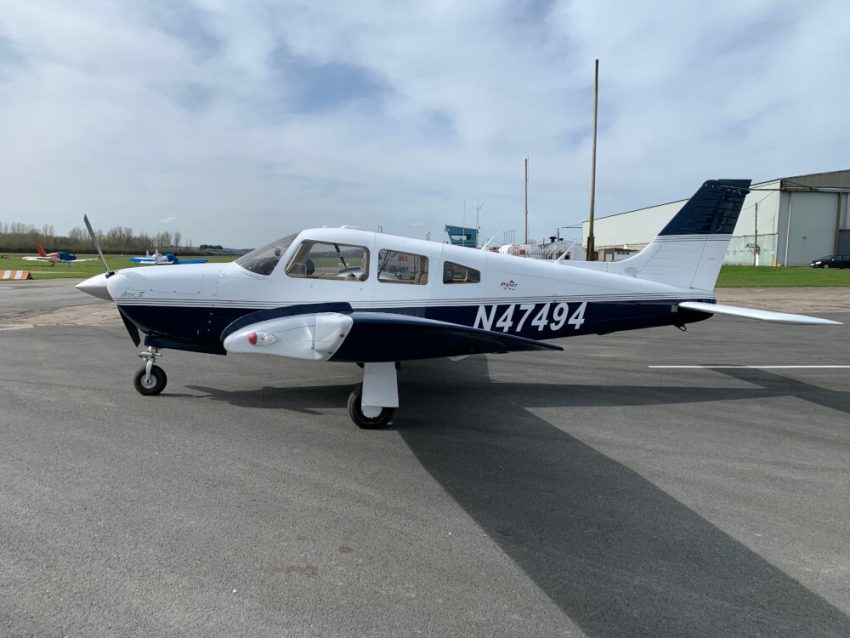Table Of Content

After two years and sales of almost 1100 airplanes, Piper came out with a 200-HP version of the Arrow. An extra $500 bought pilots a Lycoming IO-360-C1C engine, a few knots and a 100-pound boost in gross weight, though that was eaten into by a 79-pound increase in empty weight. The -C1C engine was more costly in other ways, too—it had a 1200-hour TBO, compared to 2000 for the 180. That short TBO has since been lengthened by fitting new exhaust valves, and it’s highly unlikely that any of the 1200-hour mills remain. The 200-HP Arrow was sufficiently more popular than the 180 that the latter was dropped in 1971.
Insurance Options
Not to slight the feelings of Turbo owners, but the blown PA-28 represented a predictable evolution from the Cherokee's modest beginnings, and nothing about its design and execution could be considered ground-breaking. And as even content owners readily admit, the early examples were subject to considerable mechanical distress from the turbocharged six-cylinder under the cowl. Today, however, myriad modifications are available for the Turbo Arrow that address the engine's basic shortcomings and boost performance and top-end longevity. Safety features sometimes spawn new hazards while eliminating old ones. At high density altitudes, relates one owner, the gear sometimes drops after it has been retracted. Indeed, there have been incidents in which the airplane might have been able to climb out safely had the gear not dropped at the wrong moment, causing a stall/mush into the terrain.
Piper Arrow III PA-28R-201 Performance
The gear extension limit is close to the cruise speed (which really says more about the cruise speed than it does about the gear), so descents arent the problem they are in slick airplanes like the Mooney. The Piper Arrow is one of the Piper PA 28 Cherokee aircraft, which is a whole family of fairly similar aircraft built by Piper, mainly designed for flight training and General Aviation use. The airplanes are all-metal aircraft, single-engined, piston-powered, and have low-mounted wings and one door on the right-hand side. Piper Arrow is only a retractable Cherokee, is a sound step-up aircraft for pilots currently flying fixed-gear Pipers. The whole thing will be recognizable, from gauge replacement to procedures and handling.
FAA Fit? Wingman Med Backstops
This 1978 Piper PA-28R Turbo Arrow III Is a Faster-Than-Expected ‘AircraftForSale’ Top Pick - FLYING
This 1978 Piper PA-28R Turbo Arrow III Is a Faster-Than-Expected ‘AircraftForSale’ Top Pick.
Posted: Wed, 03 Apr 2024 07:00:00 GMT [source]
This translates to full fuel, plus 500 pounds of people and baggage. I concluded the Arrow IIIs (long wing, conventional tail, 72 gallons fuel) were over-priced, and so searched for a good Arrow II (short wing, conventional tail, 48 gallons fuel). Before I located one, I found my 1979 Arrow IV (long wing, T-tail, 72 gallons fuel.) I was initially leery of the T-tail based on stories Id heard.
Pilots through the years have bemoaned the placement of power gauges at the lower edge of the panel, above the pilot's right knee. It all depends on what you're used to because longtime Cherokee pilots seem to not even notice gauge placement. Costs for fuel, maintenance, hanger, insurance, and OH reserve have been $45/hour. I havent had an annual done yet, so that number is artificially low.
Unique Landing Gear
It had custom paint, a high-end leather interior and a full Garmin suite of avionics coupled to an S-TEC 55X autopilot. Better yet, the owner replaced the old engine with a factory remanufactured engine, which had 380 hours on it when I picked up the aircraft. A search for an Arrow proved challenging as I was looking for a turnkey aircraft that had pristine paint, a low-time engine and solid avionics.
ENTHUSIASTS & PILOTS - JOIN & SAVE!
I upped the hull value after the panel upgrades—insurance for the average Arrow would be much less. I would estimate average yearly maintenance costs at around $3000. Since buying the airplane, I’ve upgraded the paint, avionics and interior and had to replace the prop because of an AD.

The Taylor brothers – Clarence and Gordon – started the company to produce their Taylor Chummy, a two-place high-wing monoplane design. Piper Arrow insurance, like all aviation insurance, is broken down into liability cover, which is standard on all aircraft types, and optional hull cover, which covers damage to the aircraft itself. So, of course, you can save money by opting for only liability coverage, although you would probably not be wise to do so. In terms of deep, nasty mischief involving internal engine mechanics, not including turbo grief, we tallied 24 reports. And here were talking about things like cylinders cracked or broken or head separated (eight), broken connecting rods (five), broken rocker arm shaft/stud/nut (four), piston scuffing, failed counterweight, broken valve, etc.
Inside the Piper propeller planes that fly to ski resorts in the Alps - Business Insider
Inside the Piper propeller planes that fly to ski resorts in the Alps.
Posted: Sun, 19 Jun 2022 07:00:00 GMT [source]
The Arrow has no handling quirks or bad habits and is a joy to fly. The only drawback I have found is the 48-gallon useful fuel capacity of the Arrow II—an issue that was rectified in the Arrow III with the adoption of the tapered wing and 68 gallon tanks. But I can still get four hours plus reserves—which is plenty for my usual flights. Piper deserves mention for its seat design in later aircraft, which have a crashworthy S-tube design meant to progressively collapse and absorb energy during an impact. Piper also gets crashworthiness kudos for installing a thickly padded glareshield.
The advantage of the manual system is that it is cheap and reliable, and so Cessna and Rockwell employed a variation of the do-it-by-hand method for the T/TR-182 and 112TC. The wastegate is mechanically linked to the throttle; the first portion of lever travel opens the carburetor and the last closes the wastegate. Though easier to manage than a second throttle system, much pilot interaction is required to maintain manifold pressure at a given mark. Other gear-ups occurred when the pilot simply forgot to lower the gear; the automatic extension system either didnt work at all, or only partially extended. Many gear-ups occurred when the pilot-after selecting gear down-failed to note that he didnt have a three-green indication. Had he followed the emergency extension procedure, the mishap probably wouldnt have occurred.
Last, being fuel-injected, the Arrow can be difficult to start when the engine is hot, especially after quick-turn refueling in the summer. As a rule, if the engine doesn’t fire in two start attempts, proceed to a flooded start procedure. True airspeed has consistently been 140 knots over the 15 years I have owned the Arrow, while the average cost for annual inspections has been about $2100. Its original baby-blue paint has held up well since the aircraft has been hangared for most of its life.
We have had some maintenance issues due to improper operation of the airplane, so we may need to increase those times. The 200-HP Piper Arrow was sufficiently more popular than the 180 that the latter was dropped in 1971. The Arrow’s automatic landing gear extension system was intended as a safety feature; Piper touted the Arrow as the perfect airplane for pilots transitioning to retractables. Many pilots and insurance underwriters embraced the “foolproof” gear system, with some insurers even assigning lower rates. Alas, the system isn’t perfect, and didn’t prevent landing gear-related mishaps in the Arrow. In the mid-1970s, Piper revamped its line of metal singles (leaving the Super Cub alone), starting with the bottom of the PA-28 line.
While 140 knots is possible at max power, I typically flight plan 135 knots at percent power on 10 GPH. For the extra few knots a Mooney might deliver, the Arrow is a more comfortable and pleasurable plane to fly. The first two Arrows had somewhat limited range, thanks to their 48-gallon fuel capacity. Beginning with the taper-wing Arrow III, 72-gallon fuel tanks eliminated that problem.
Arrows are still in production, and parts are readily available. I also like the fact that the backup gear extension system is operated by gravity – thats as simple and reliable as you can get. I wanted some performance, constant-speed, retractable, economy, low-wing and a four-place single. By the mid-1960s, Piper began considering the PA-28 as a candidate for penetration into the light four-place retractable market. Beechs least expensive retractable was the Debonair, which cost a third again as much as a Mooney, and Cessna had no comparable airplane at all. The original 1967 Arrow was outfitted with a 180 horsepower Lycoming IO-360-B1E engine and constant speed prop for a base price of $16,900.
With nearly 7,000 Arrows produced, plenty are still in circulation. Current production model Arrows are available new directly from a Piper via a local dealer or through fleet sales. Plan to budget $228,700 for the base price of a new Arrow or an average of $43,000 for a used model. Piper Aircraft’s first model was the E-2 Cub followed by the highly successful Piper J-3 Cub for which the company would come to be known. Sales of the military version of the J-3 Cub bolstered Piper during both World War II and the Korean War.
The steady four-cylinder Lycoming, though not famous for its silky smoothness, was replaced by a six-cylinder Continental TSIO-360-F. The interior refurbishment included all-new plastic trim, overhead console and headliner, along with leather-wrapped control wheels. When the Arrow was introduced, its only real competition came from Mooney’s early M20s. Other manufacturers soon realized the viability of the market segment, however, and it wasn’t long before other competitors appeared.

No comments:
Post a Comment